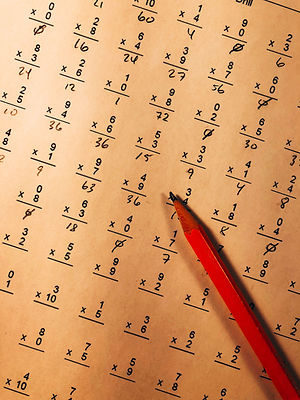
MathBait™ Multiplication
Possible or Impossible?
Share this resource!
In this Guess Who style game, students secretly select a rod and announce 2-multiples, players must determine the mystery rod. But all is not what it seems! This game is bursting with strategy. As students build familiarity, they will begin to identify "possible" and "impossible" combinations and give away information that is sure to stump their opponents!
Details
Resource Type
Activity
Primary Topic
Playing with Napier's Bones
Unit
6
Activity
2
of
10
This is recommended for younger students just learning multiplication or to build number sense in upper-elementary and middle school students.
Break students into pairs or small groups. Ideally, each student will have their own set of bones, however it is possible to play with one set per group.
Explain the game. Students should place the rods in front of them face down and secretly select a rod, not showing their group members. From their selected rod, students will pick two numbers (multiples of their number that are displayed on the rod) to announce to their group.
Next, each student has a turn to guess another member of their group's rod. They may only make one guess. If working in groups larger than two, a student can pick any other student in their group to guess their rod. Consider if you will or will not allow re-guessing. For example, in a group with students A, B, C, and D, if A selects to guess B's rod and guesses incorrectly, you may set the rules to allow C and D to also guess B's rod (or alternatively guess any other student's rod in their group), or set the rules such that once anyone has guessed, in this case student B, they have earned the point and no one else in their group can guess their rod. Both methods have merit and teachers may select to play without re-guessing as a first round and with re-guessing as a second round. Re-guessing forces students to carefully consider what they know to further narrow down the options.
To tally points, if any member of the group guesses a student's rod, that member earns a point. If no student can guess their rod, the student wins a point.
Begin with an example. Announce your rod contains 8 and 24 and allow students to guess. As 8 is a multiple of 4 and 8, and 24 is also a multiple of 4 and 8, the rod you have selected could be 4 or 8.
Allow students 10-15 minutes to play independently. Upon conclusion, announce the winners and go into a whole group discussion. Ask students for any strategies they found. Highlight that picking an "impossible" pair is the best strategy as there is no way to know for sure what rod you have picked. Here are some additional strategies to highlight:
Look for numbers that only appear once in the bones (or on a multiplication table). These numbers tell us right away the rod a student has picked.
Avoid perfect squares. While some perfect squares such as 4 and 36 appear on multiple rods, the second number can often give it away.
To create "impossible" combinations, try to use a number and its multiple (like 8 and 24).
Call out a few pairs and have students vote on if it is "possible" to know the rod or "impossible" as the pair of values appear on more than one rod. For example, 5 and 8 is possible as both numbers appear only on the 1 rod.
The material on this page is copyrighted by MathBait™. Please use and enjoy it! MathBait™ provides a temporary license for Non-Commercial purposes. You are not permitted to copy, distribute, sell, or make derivative work without written permission from MathBait™.
Tell us what you think!
Click to rate this activity

